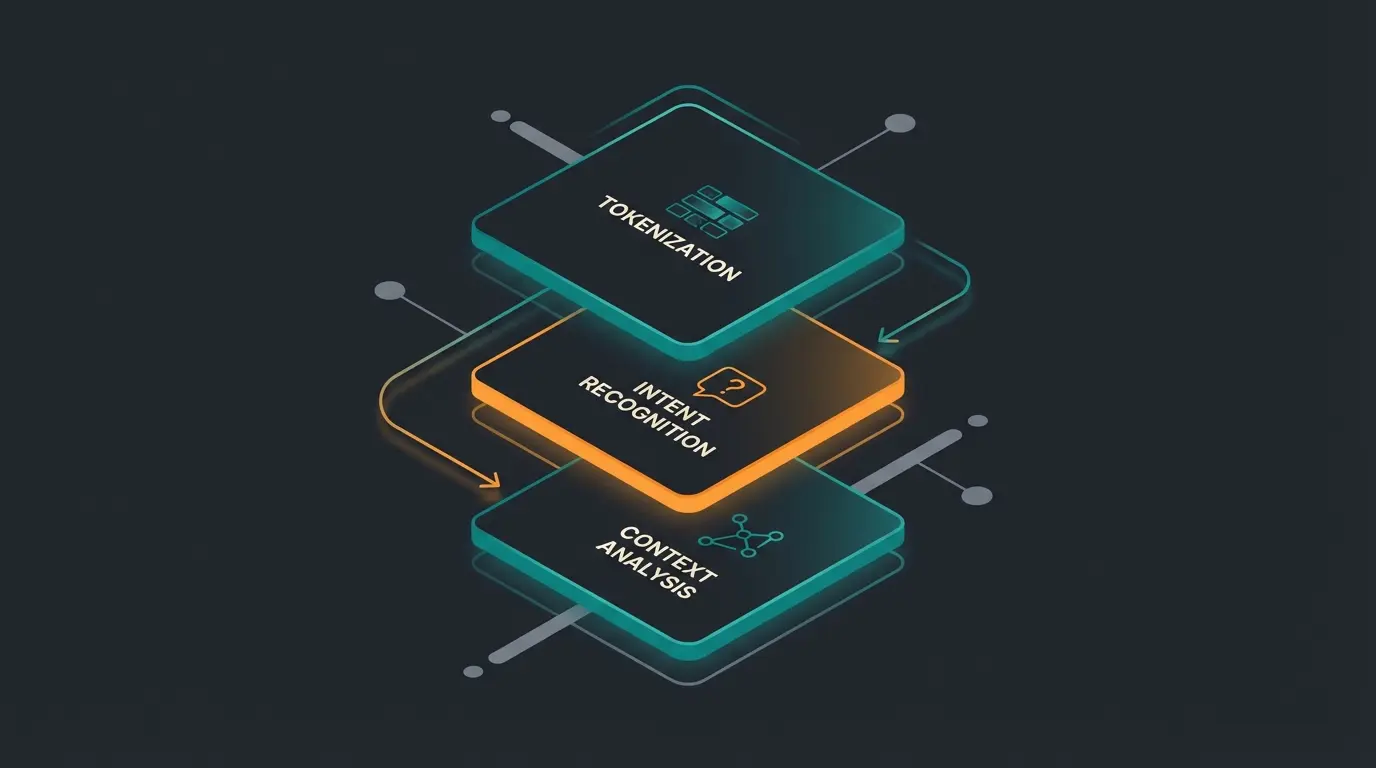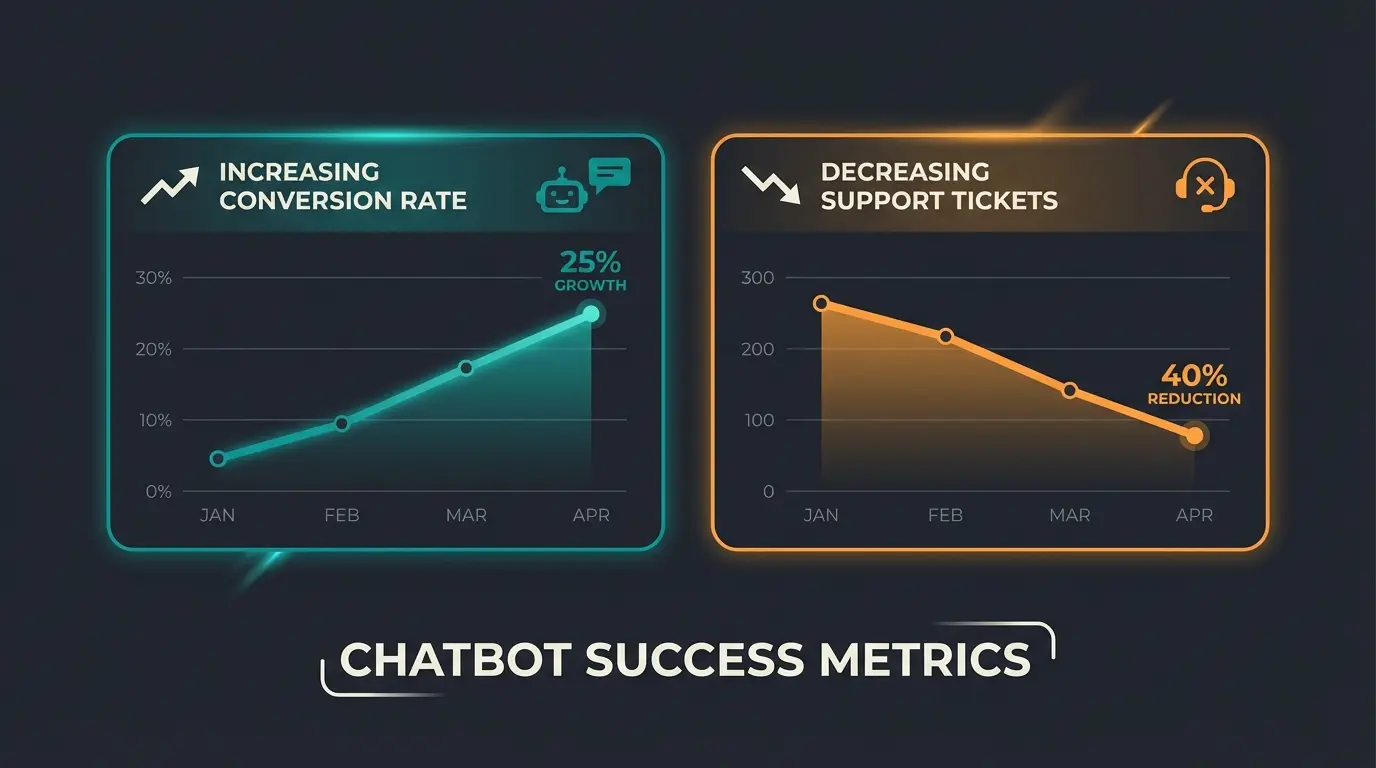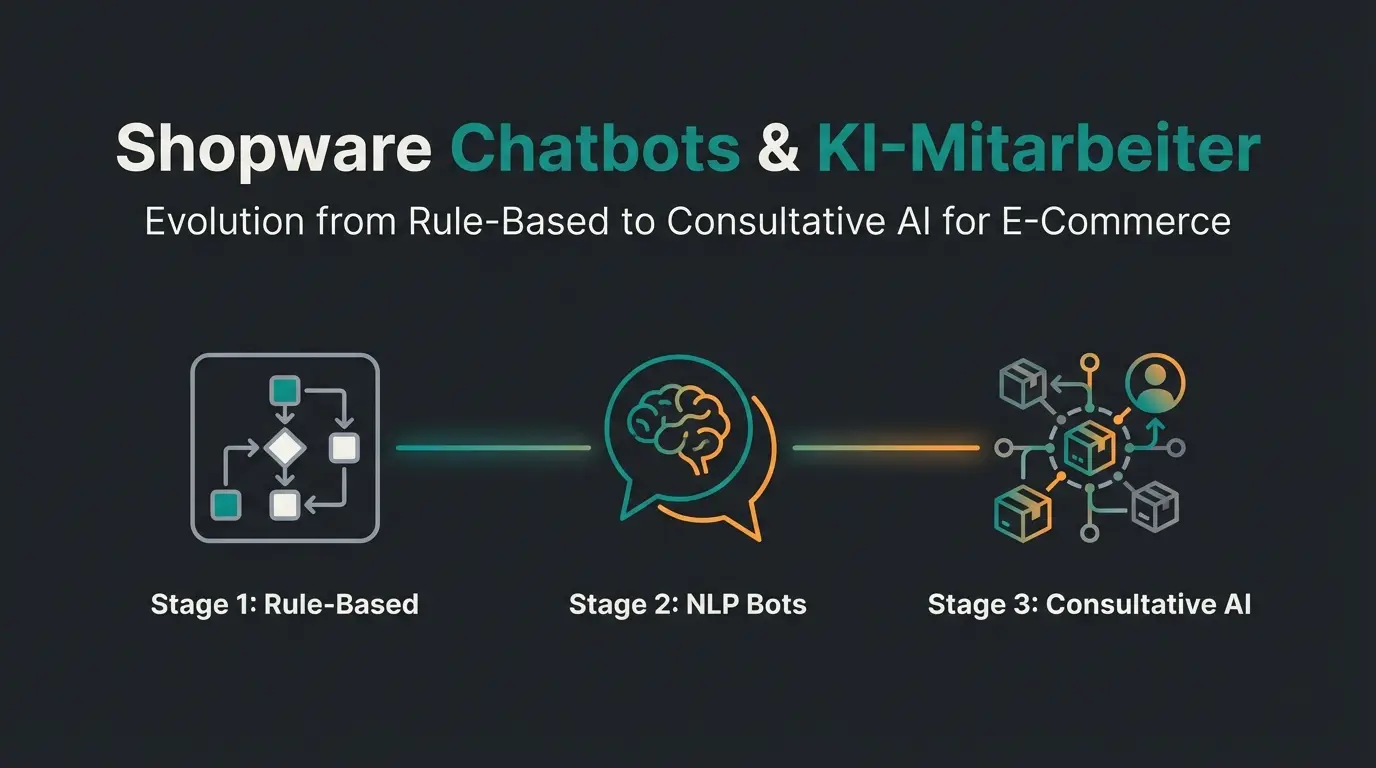From Support Bot to Global Sales Consultant: How Multilingual AI Chatbots Revolutionize E-Commerce
Unlock global markets with multilingual AI chatbots. Shift from reactive support to proactive sales consultation in 50+ languages and boost conversion rates.
Introduction: The Strategic Shift in International Marketing
In the globalized business world, AI chatbots play an increasingly important role in international marketing strategies. However, the game has changed. It is no longer just about answering FAQs; it is about overcoming trust barriers. A smart and intuitive chatbot solution enables efficient and personalized customer interaction around the clock—and in multiple languages. Current statistics prove the growing use of chatbots worldwide: According to a study by Juniper Research, the number of chatbot interactions is expected to rise significantly, reaching billions annually.
Multilingual AI chatbots offer companies decisive advantages in international marketing, specifically when moving from reactive support to proactive sales:
- Global Reach & Trust: Addressing customers in their native language builds immediate trust, a prerequisite for high-value purchases.
- Cost Efficiency: Automated communication saves personnel and translation costs while maintaining high service levels.
- Customer Satisfaction: Fast answers in the respective local language increase satisfaction and reduce bounce rates.
- Scalability: Chatbots can easily be adapted to rising demand in new markets without hiring local teams immediately.
Integrating multilingual AI chatbots into global marketing strategies is becoming increasingly important for internationally operating companies to remain competitive and optimally serve customers worldwide.
The Basics: How Conversational AI Drives Global Sales
To understand the functionality of multilingual chatbots, it is important to know the technical basics of Conversational AI. Conversational AI refers to technologies that enable computers to understand, process, and respond to human language. AI assistants play a central role here by using advanced linguistic data processing and large language models (LLMs) to understand and answer user queries not just grammatically, but contextually.
Definition of Multilingual AI Chatbots
AI chatbots are advanced computer programs developed using artificial intelligence (AI) and machine learning (ML) to understand and respond to human language. These chatbots are capable of imitating natural, interpersonal communication and providing tailored answers to user inquiries. While traditionally used in customer service to reduce ticket volume, they are now pivotal in marketing to help companies understand their customers better and serve them more efficiently. By using AI chatbots, companies can offer personalized support around the clock and simultaneously increase customer satisfaction.

Natural Language Processing and Machine Learning
Two key technologies form the foundation of modern AI chatbots:
Natural Language Processing (NLP): NLP enables computers to analyze and understand human language. Techniques such as tokenization, part-of-speech tagging, and named entity recognition are used to grasp the meaning of texts.
Machine Learning (ML): ML algorithms enable chatbots to learn from data and continuously improve their performance. Neural networks and deep learning play a central role in processing natural language.
How AI Chatbots Work
AI-powered chatbots typically go through the following steps when processing user inquiries:
- Input Processing: The chatbot receives and analyzes the user input.
- Intent Recognition: The user's intention is identified using NLP techniques.
- Context Analysis: The context of the conversation (previous messages, user location) is taken into account.
- Information Retrieval: Relevant information is retrieved from the knowledge base or Product Information Management (PIM) system.
- Response Generation: A suitable answer is formulated in the target language and sent to the user.
It is important to evaluate and compare different chatbot softwares to find the best solution regarding user-friendliness, adaptability, and costs.
The Consultant Difference: From Translation to Consultation
Most companies make the mistake of deploying a "Translator Bot"—a standard FAQ bot wrapped in a translation layer. To truly succeed in international markets, you need a "Product Consultant AI." This distinction is where you beat the competition. A translator bot waits for a problem; a consultant bot proactively guides the user to a purchase decision.
For example, if a user asks "I need a camera for sports," a support bot simply links to the camera category. A Consultant AI asks, in the user's native language, "Indoor or outdoor? Professional or hobby?" to narrow down the selection.
| Feature | Standard Translation Bot | Product Consultation AI |
|---|---|---|
| Primary Goal | Ticket Deflection (Support) | Conversion & Sales (Growth) |
| Knowledge Source | Static FAQ Lists | Deep Product Data (PIM) & User Intent |
| Interaction Style | Passive / Reactive | Proactive / Guiding |
| Cultural Context | Literal Translation | Culturally Adapted Persuasion |
Challenges in Developing Multilingual Sales Bots
Developing multilingual AI chatbots for global marketing strategies involves complex challenges. To create effective solutions, companies must understand and overcome these hurdles. A free trial version can help to implement and evaluate new chatbot technologies before full integration.
Speech Recognition and Translation Accuracy
One of the biggest technical challenges lies in precise speech recognition and translation. AI chatbots must be able to correctly capture and interpret various languages, dialects, and accents. The translation must not only be grammatically correct but also consider the context and the intention of the users. Advanced AI models like Meta AI show promising approaches here by being trained in multiple languages and delivering context-sensitive translations.
Localization of Chatbot Responses
Mere translation of answers is often insufficient. Chatbots must adapt their communication to local conditions. This includes considering regional specificities, colloquialisms, and specific expressions. Effective localization requires extensive data collection and continuous training of AI models with local content. For example, payment methods preferred in Germany (invoice) differ from those in the US (credit card), and the bot must know this context.
Cultural Differences and Nuances
Particularly challenging is the consideration of cultural differences in communication. Chatbots must react sensitively to cultural norms, taboos, and communication styles. What is considered polite in one culture (e.g., indirectness in Japan) might be perceived as vague in another (e.g., directness in the Netherlands). Developing culturally sensitive AI chatbots requires not only technical know-how but also a profound understanding of intercultural communication.
Equip your business with a chatbot that speaks your customers' language and understands their culture.
Start Your Free TrialImplementation Strategies for Multilingual AI
Successful implementation of multilingual AI chatbots requires a well-thought-out strategy and careful planning. Here are the most important steps and considerations for companies wishing to deploy global Conversational AI solutions:
Choosing Suitable KI Platforms
Selecting the right AI platform is crucial for the success of multilingual chatbots. Companies should prefer platforms that are robust, scalable, and optimized for multilingual applications. Important criteria include:
- Language Support: Wide range of supported languages and dialects.
- Adaptability: Ability to fine-tune for industry-specific terminology.
- Integration Capabilities: Compatibility with existing systems and databases.
- Scalability: Ability to handle growing user volume and additional languages.
The Critical Role of PIM Integration
To move from a support bot to a sales consultant, your chatbot needs access to data. This is where Product Information Management (PIM) integration becomes vital. The AI must understand product relationships across languages—knowing that a specific "lens" is compatible with a specific "camera body" regardless of whether the user asks in French or German. Without this structured data, the bot cannot effectively upsell or cross-sell.
Data Collection and Preparation
High-quality data is the foundation of every successful AI chatbot. For multilingual systems, it is important to collect comprehensive and diverse datasets in all target languages. This includes:
- Collection of customer conversations, FAQs, and product information in various languages.
- Preparation and cleaning of data to remove errors or inconsistencies.
- Annotation of data to improve understanding of context and intention.
A thorough data preparation process ensures that the chatbot can provide precise and context-relevant answers in all languages. Chatbots play a crucial role in providing service in customer and IT support by automating communication and support for customers and employees.
Instantly identify visitor language and switch interface.
Ask probing questions in native language to understand intent.
Suggest specific items using PIM data and cultural context.
Resolve payment and shipping queries to close the sale.
Training and Fine-Tuning Models
Training AI models is a critical step in implementing multilingual chatbots. Companies should rely on an iterative process:
- Initial training with prepared multilingual datasets.
- Testing the chatbot in various languages and scenarios.
- Analyzing results and identifying potential for improvement.
- Fine-tuning models based on findings and comparing different chatbot providers and their solutions.
- Repeating the process for continuous improvement.
This approach allows for step-by-step optimization of the chatbot's performance in all supported languages.
Best Practices for Chatbots in Global Marketing
Deploying multilingual AI chatbots in global marketing opens new opportunities for companies to address their target groups worldwide. To fully exploit the potential of this technology, companies should observe some best practices:
Personalizing Customer Interaction
Effective personalization of chatbot interactions is crucial for success in international marketing. AI chatbots can analyze customer data to deliver tailored recommendations and answers. This significantly increases the relevance of communication and improves the customer experience.
- Language Preferences: Automatic detection and adaptation to the user's preferred language.
- Purchase History: Product recommendations based on previous purchases and interests.
- Local Offers: Consideration of location for region-specific promotions.
Integration into Existing Marketing Channels
Seamless integration of multilingual chatbots into existing marketing channels is of great importance. This enables a consistent customer experience across all touchpoints. AI chatbots in marketing can be integrated into social media platforms, websites, and e-mail campaigns, for example. Through integration, chatbots can support advertising campaigns, provide real-time product information, collect customer feedback, and optimize the sales process through targeted product recommendations.
Measuring and Analyzing Performance
To ensure the success of multilingual chatbots in marketing, continuous measurement and analysis of their performance is essential. Important KPIs include:
- Conversion Rates: How many chatbot interactions lead to desired actions (Sales)?
- Customer Satisfaction: Ratings and feedback after chatbot conversations.
- Response Accuracy: How precise and relevant are the chatbot's answers?
- Engagement Rate: How long and intensively do users interact with the chatbot?
Case Studies: Successful Implementation of Multilingual AI Assistants
The practical application of multilingual AI chatbots shows their immense potential for global marketing strategies. Three case examples illustrate how companies from different industries profit from this technology:
Example 1: International E-Commerce Provider
A leading e-commerce provider implemented a multilingual AI chatbot to better serve its global customer base. The chatbot was trained in 10 languages and could answer product inquiries, support checkout processes, and solve customer problems.
Results: 30% increase in conversion rate among international customers 40% reduction in customer service team workload * 95% positive customer ratings for multilingual support
Example 2: Global Travel Company
An international travel company used a multilingual chatbot to support customers with travel planning and booking. The chatbot could communicate in 15 languages and give recommendations based on customer preferences and local offers.
Results: 25% increase in online bookings via the chatbot 50% faster processing time for customer inquiries * 35% increase in customer satisfaction during travel planning
Example 3: Multilingual Customer Service of a Tech Giant
A global technology corporation implemented an AI-supported, multilingual chatbot for its customer service. The chatbot was able to answer technical questions, perform problem diagnoses, and guide customers through solution steps—all in 20 different languages.
Results: 60% of customer inquiries resolved without human intervention 45% cost savings in customer service * 98% accuracy in detecting and solving customer problems
These case studies illustrate how AI chatbots revolutionize customer service and simultaneously support marketing. They show that multilingual chatbots not only increase efficiency but also significantly improve the customer experience. Key takeaways include the need for thorough preparation, the importance of continuous improvement based on feedback, and the value of integrating chatbots into existing business processes. For more practical tips, check our guide to AI chatbot integration.

Calculate your potential ROI with our Multilingual Chatbot Savings Calculator.
View CalculatorFuture Trends: AI Chatbots and Global Marketing Evolution
The rapid development of AI technology is driving the evolution of multilingual chatbots. A pioneering trend is multimodal AI systems that combine text, voice, and visual elements. Chatbots can analyze images sent by users to diagnose product issues or generate visuals to demonstrate usage.
Further future trends include:
- Emotional Intelligence: Chatbots that detect user mood and adjust tone culturally appropriately.
- Cross-Lingual Learning: AI models transferring insights from one language to another for more efficient training.
- Augmented Reality Integration: Chatbots interacting in AR environments for immersive product presentations.
- Blockchain Technology: Secure, decentralized data storage for more trust in AI-supported conversations.
Conclusion: Multilingual AI Chatbots as Key to Global Success
Multilingual AI chatbots have become an indispensable tool for companies wanting to succeed in the global market. They enable personalized, culturally adapted customer approaches around the clock. The benefits range from opening new international markets without language barriers to automated processing of inquiries and gaining valuable cross-border customer insights.
Companies that invest in multilingual chatbot solutions now and continuously expand their capabilities position themselves optimally for global competition. They create the conditions to address customers worldwide individually, inspire them, and bind them to their brand long-term. Multilingual AI chatbots are more than just a trend—they are the key to successful global marketing in an increasingly networked world.
Translation bots simply translate text literally using a layer like Google Translate, often losing context. Native AI bots are trained on datasets in the specific language, understanding cultural nuances, idioms, and specific product intent.
Yes, when integrated with a PIM (Product Information Management) system, AI chatbots can access deep technical data and explain complex specifications, compatibility, and usage instructions in the user's native language.
Beyond English, key languages for global e-commerce include Mandarin Chinese, Spanish, German, French, and Japanese, as these cover the largest share of global purchasing power.
No. The best strategy is a hybrid model where the AI handles consultation and routine queries (80%), while complex, high-emotion issues are handed off to human agents.
Don't let language barriers stop your growth. Implement a multilingual AI consultant today.
Get Started Now
